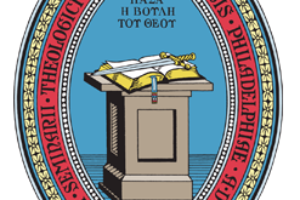In his recent monograph, The Birth of the Trinity: Jesus, God, and Spirit in New Testament & Early Christian Interpretation of the Old Testament, Matthew W. Bates provides an alternative account of the origins of trinitarian doctrine. His thesis is that, “in conjunction with early Christian experiences of Jesus and certain philosophical and mediatorial factors, the idea of separate persons in timeless, intimate communion with the Godhead—Father, Son, and Spirit—was especially fostered and nurtured by a specific reading technique [i.e., prosopological exegesis] that the earliest Christians utilized as they engaged their ancient Jewish Scripture” (3, his emphasis).
In chapter one, Bates articulates his exegetically driven account of the growth of trinitarian doctrine in terms of three common explanations: (1) “trinitariansim by encounter with the historical Jesus,” (2) “trinitarianism by Hellenistic philosophical imposition,” and (3) “trinitarianism as the outgrowth of mediated Jewish monotheism.” While he agrees with certain proponents of the third category (i.e., Bauckham and Wright) that stories about God and God’s character provide the “overarching framework” for the NT’s articulation of Jesus’s identity, Bates argues for “the primacy of the person metaphor” via prosopological exegesis (26–27).
According to Bates, early Christian authors made use of prosopopoeia (i.e., speech-in-character) not only for rhetorical purposes, as is generally acknowledged by Pauline scholars, but also as a tool for distinguishing different divine “persons” (prōsopa) within the Jewish scriptures (31–32). That is, when early Christians encountered an exchanged between these divine “persons” within the scriptures, they located the speech-event within the context of an unfolding “theodrama.” The proposed model delineates between three distinct “settings.” The prophetic setting is the point at which an OT prophet (e.g., David, Isaiah), speaking by the Holy Spirit, performed a speech “in the character [i.e., prosōpon] of God the Father, Christ the Son, and others” (34). The actualized setting “is the moment at which the theodrama is truly performed, not by the prophet-actor but by the person(s) the prophet was representing in the theodrama” (35). Finally, the theodramatic setting determines “the time at which the speech is delivered from within the narrative world of the ‘divine play,’” that is, “the Christ may speak about things past, present, or future with regard to the theodramatic setting” (35).
In chapters 2–6 Bates applies his approach to different categories of “speeches” within the theodrama. Chapter 2 examines how early Christians and, indeed, the “historical Jesus” himself, located conversations between God and his preexistent Son in Psalm 2 and 110 (41–84). Chapter 3 examines conversations between God and Jesus about the Son’s mission in the world, focusing in particular on the Isaianic “Servant” of YHWH (85–114). In chapter 4, Bates shifts his attention to conversations in the Psalter (esp. Ps 22) between the Father and the Son about the crucifixion (115–35). Chapter 5 covers speeches wherein the vindicated Christ praises his Father (136–56). And chapter 6 examines conversations between the Father and his exalted Son about the Son’s present and future reign.
In the book’s final chapter, Bates poses the question, “When the earliest Christians interpreted the ancient Jewish Scripture in a theodramatic fashion—assigning various divine persons to explain dialogical shifts—was this a good reading of the Scripture?” (176). He answers the question, in part, by juxtaposing “Gnostic” theodramtic exegesis with that of the proto-orthodox (177–90). For Bates, proto-orthodox prosopological exegesis (exemplified by Irenaeus) is rooted in a proper understanding of the hypothesis (i.e., master plan), the economy (i.e., proper arranged of the building-blocks), and the recapitulation (i.e., summary of the central components) of the “divine drama” (185–87). The chapter concludes with an assessment of the presuppositions that enabled Christian prosopological exegesis (190–93), and a set of “critical controls” for determining whether or not a prosopological reading is a “good” reading of an ancient Jewish text (196–202, here 196).
For the sake of economy, I offer three brief reflections on the book. First, Bates’s central argument, that the development of trinitarian doctrine is rooted in locating the voice of Jesus within the Jewish Scriptures, is thoroughly convincing. I do have some concerns, however. Principally these revolve around what I perceive to be an insufficient engagement with what I will call, perhaps too broadly, the category of “late Second Temple Judaism.” For example, Bates gives very little indication that the scriptures being selected by the “historical Jesus” and his followers were likely chosen precisely because they were understood to be about the messiah. Given Bates’s claim that the “historical Jesus and his followers most likely regarded Jesus as the Davidic messias designatus” (48), and his resounding endorsement of Matthew Novenson’s recent monograph (48 n. 12), this lacuna is curious indeed. As a further illustration of this point, Bates offers only marginal points of connection between his proposal for Christian readings of the Jewish scriptures and antecedent and contemporaneous Jewish readings of these same texts (what Bates refers to as “pre-texts” and “co-texts;” 58).
Second, Bates is correct to challenge the marginalization of Wirkungsgeschichte (“effectual history”) within the discipline of NT Studies (59). That is to say, the way the early church Fathers read their “Old Testaments” may provide a window into how the NT authors read the same texts. At times, however, one is often left with the impression that Wirkungsgeschichte becomes the dominant lens through which Bates approaches the Jewish scriptures. In my view, this is a glaring methodological issue for a work that claims to be primarily concerned with historical reconstruction.
Third and, perhaps, most importantly, Bates’s use of prosopological exegesis as a way of attuning our eyes and ears to the dialogical shifts within passages in the Jewish scriptures opens an entire new avenue of research for students of the NT. Even if one is not always convinced by Bates’s explanations of how specific scriptural texts were being read, it is hard to not be persuaded that the method itself is here to stay. For this reason and many others, this book deserves serious attention from biblical scholars and theologians alike.
Reviewed by Max Botner
University of St Andrews





Leave a Reply
Your email is safe with us.